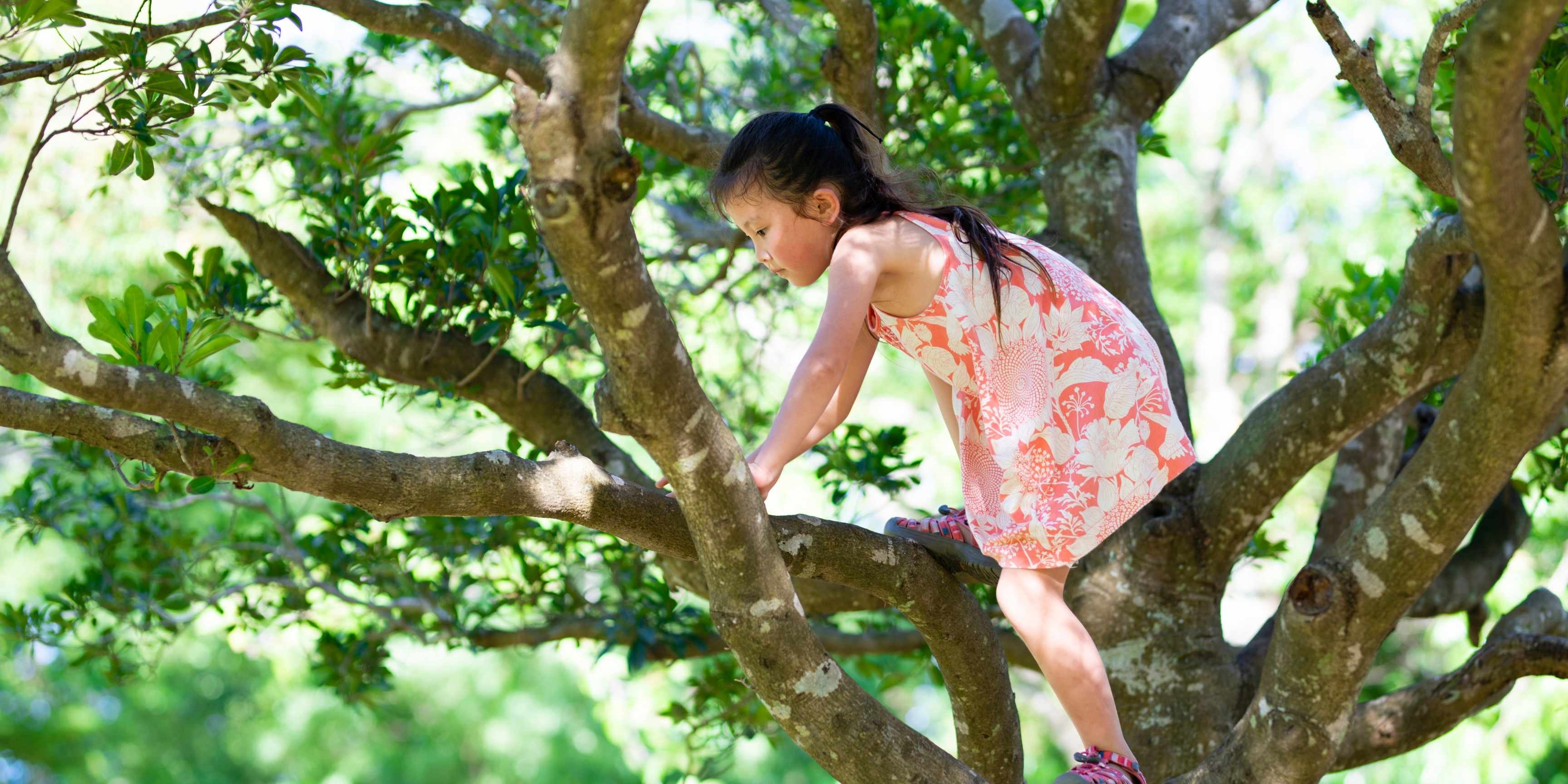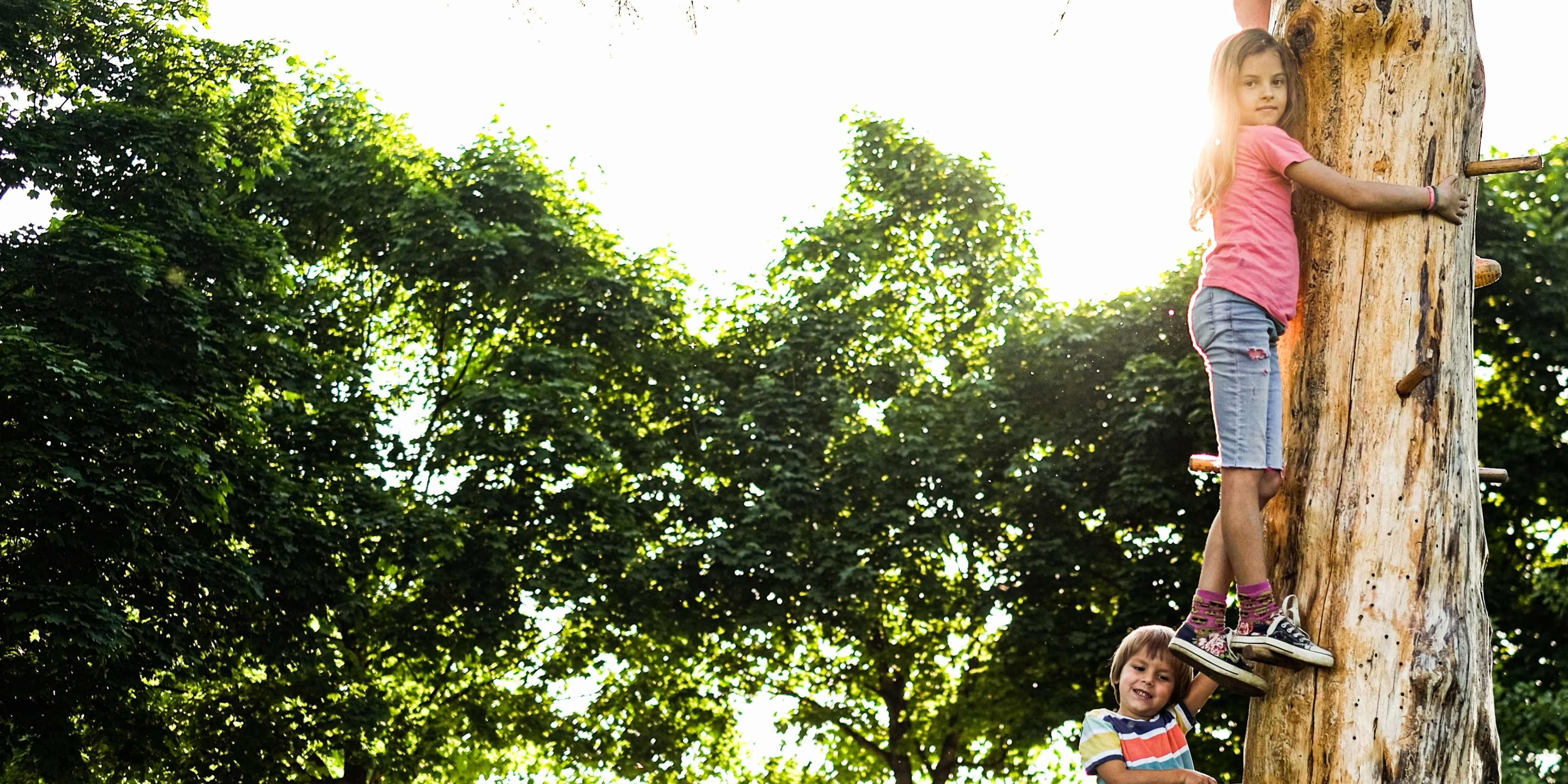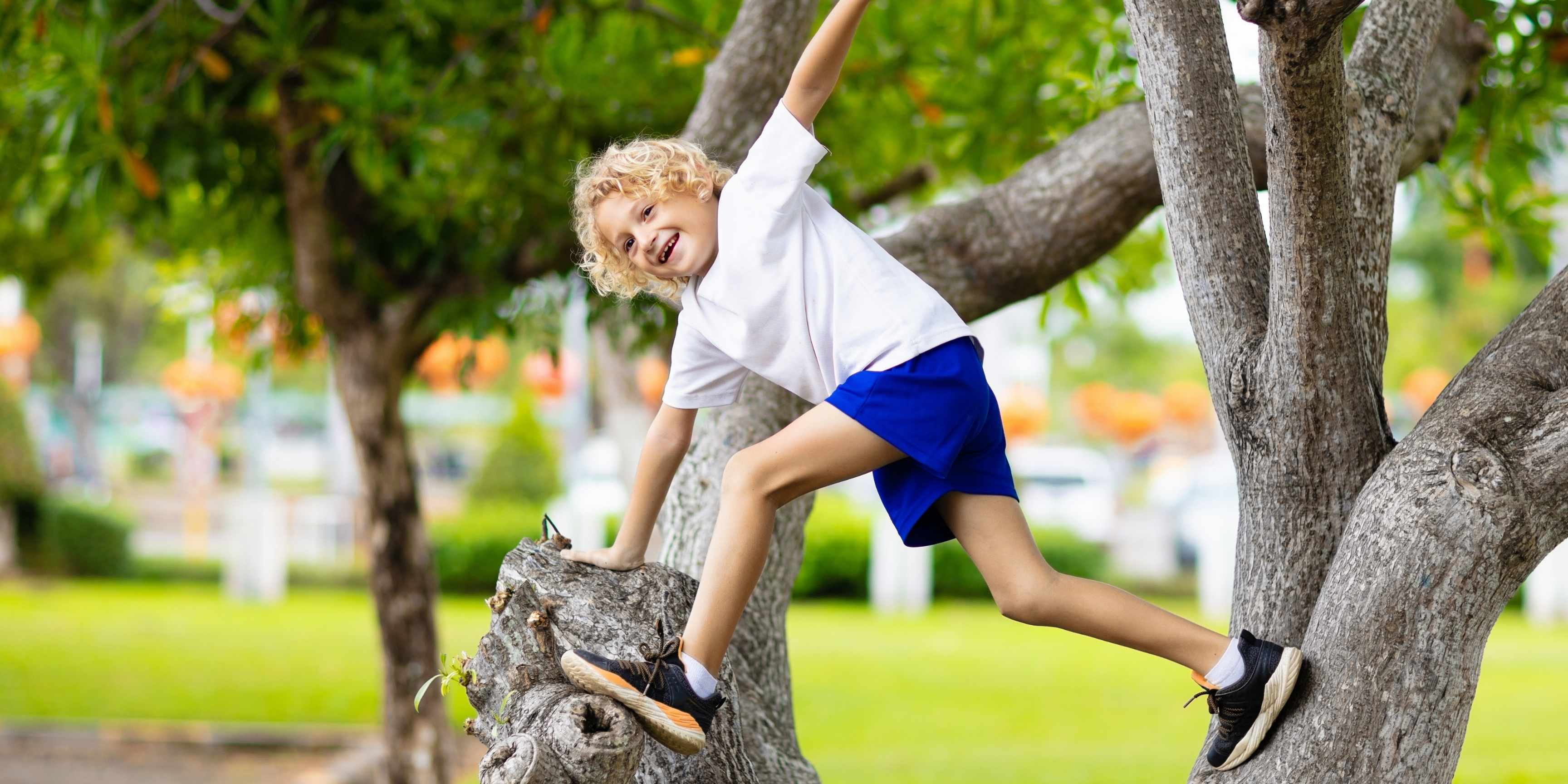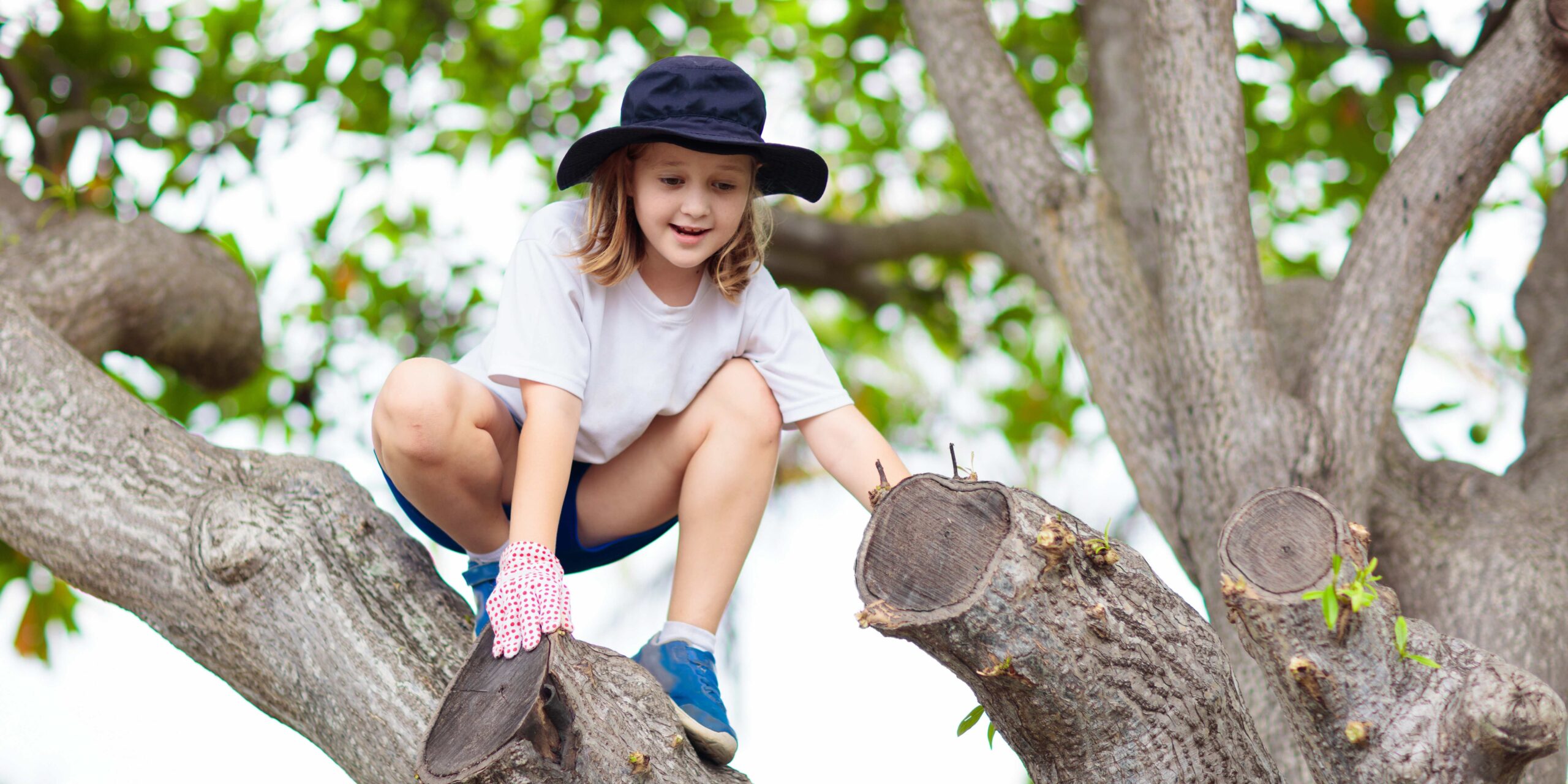This post may contain affiliate links. We may earn money from products we link to in this post.
While many parents fondly recall their own days of fervently mounting gangly spruces and creaky old oak trees, others are concerned about their children’s safety when they do the same nowadays.
Tree climbing carries some danger of physical injury, and no parent wants to be the cause – actual or perceived – of their child’s visit to the ER.
However, as a society, we have grown much more risk averse than we were just a generation ago, and behaviors that were formerly considered the usual for children – climbing trees, playing outside without adult supervision, being home alone, rough and tumble play – have now become anomalies.
This is problematic because children need to engage in risky play in order to build their executive function, which is a crucial predictor of future success.
I understand that as parents, we all have various levels of willingness to allow our children to take risks. Even if you understand the benefits of risky play and believe that children need more of it, you may struggle to overcome unjustified anxieties.
This is where simple precautions and a gradual approach to tree climbing can come very handy. I’ve included nine recommendations to help you feel more confident about your children climbing trees.

Tips For Kids Who Love To Climb Trees
Start Early
Crawling over and balancing on fallen logs is an excellent way to introduce babies and toddlers to tree climbing and allows them to master the skills gradually.
Simply inspect the surrounding environment for concealed hazards and spot your child as needed, as very young children lack the ability to assess risk on their own.
Consider planting a climbing tree in your backyard while your child is a baby. A weeping willow, for example, can mature into full-fledged climbing trees in just a few years.
Avoid Helping Your child Get Onto The Tree
They will stand up on their own when their bodies are ready, and assisting them will only push them to take on more harder difficulties than they are capable of handling.
Let Your Child Lead
Pushing your child to climb or dictating their every move will increase the likelihood of a mistake. Instead, strive to trust your child’s ability to manage risk and intervene only if you believe he or she is in danger.

Avoid Telling Your Child To Be Careful
Instead, provide cues that will assist your child assess the situation, such as “Does that branch seem sturdy?” or “Are you able to get a strong grip?” “How are you going to get up there?”
Check the Tree
Check for decaying branches and roots and make sure it’s robust enough. Cracks and cracks in the trunk, significant sections of missing bark, and mushrooms or fungus developing on or near the trunk are all symptoms that the tree is unhealthy.
Tree Climbers International, a group for persons who climb trees with ropes and harnesses, offers a useful guide for tree inspection that includes many guidelines that also apply to children climbing.
Test The Branches
Teach your child to test the strength of a branch by placing one foot on it and gently pushing it down before placing their entire weight on it.

Teach the 3 Point Rule
Always keep “three on the tree,” which means your child should always have either two hands and one foot or two feet and one hand in touch with the tree.
Go Over Ground Rules
Perhaps you’d like your child to notify you before going climbing, to climb with an adult present, or to stay within a specific height limit (experts recommend that child’s climb no higher than 12 feet without a harness).
But only make rules that keep them as safe as they need to be, not as safe as possible. As your child gains confidence and experience, test yourself by loosening the boundaries and allowing your child more independence.

